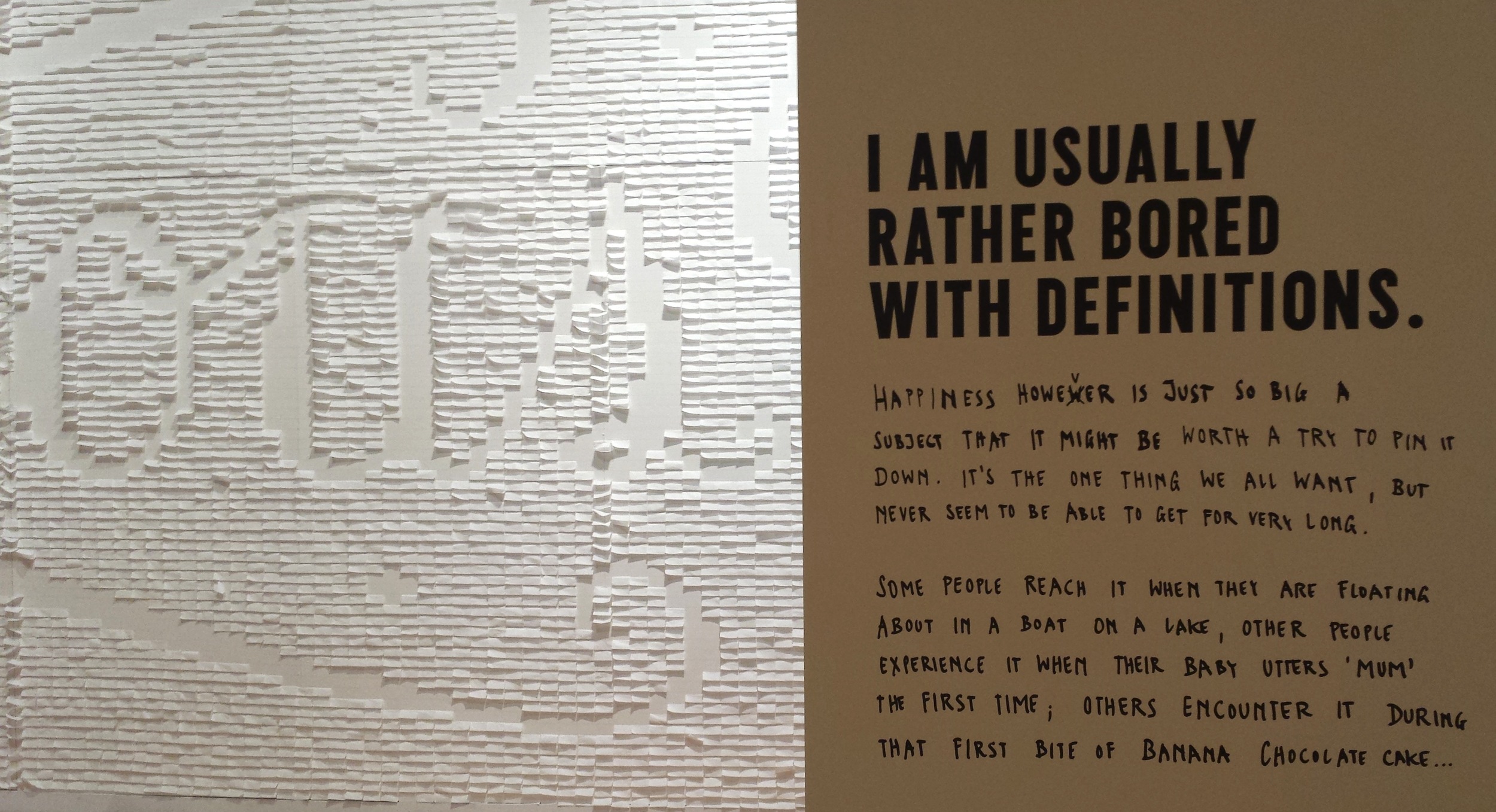when you work in an office, it’s easy to get sucked into the vortex. meetings and email, staring at your computer screen for literally hours on end, perfecting the assprint in your non-ergonomic chair and spilling crumbs onto your keyboard as you clumsily scarf up a sandwich while typing and chewing simultaneously.
frustrated and uninspired, i resolved to make a conscious effort—particularly in times of stress or duress—to get up out of my chair and take a walk outside. at a minimum, it would be a few minutes to get some fresh air and clear my head, and if i was lucky, hopefully stumble on something more than simply relief from the daily grind—possibly even inspiration?
a couple months ago, some creatives in my office were buzzing about an exhibit at the chicago cultural center, a landmark building that features a revolving schedule of free lectures, films and art exhibits. given its proximity to my building—literally one block away—it was a no-brainer. spending my lunch hour staring at some cool typography would be a welcome diversion from the blinding pain of another powerpoint.
“the happy show” is the culmination of visual artist stefan sagmeister’s 10 year-long exploration of happiness through typography, video, sculpture and interactive installations. his ultimate quest: to discover whether it’s possible to train your mind like you train your body—to be happy.
it struck me that “the happy show” was an odd title, suggesting a tv program or movie, a state of being where we passively watch the storyline play out versus actively create an outcome. yet the installations seemed to present an entirely different conclusion altogether.
when i got to the exhibit, i was immediately transported. upon entering the huge, open loft, i was enveloped by this sweet, ethereal music. the sound didn’t seem to come from anywhere in particular, but rather filled the space with lightness, air, the perfect backdrop to ponder such existential questions: what does happiness mean? does it vary between men and women? what conditions are required to achieve a state of bliss? what are the barriers?
one of the focal points of the exhibit was a giant installation of neon letters that spelled out the phrase: “my overall level of satisfaction.”
connected to the words was a bicycle that viewers were invited to sit on. as you began to peddle, other phrases would shine brighter, glowing with intensity.
another installation: an electric outlet with the accompanying words scribbled:
and on a massive wall, white post-its were artfully arranged and 3 separate fans gently blew on the paper in a billowy, cascade of movement. you had to step back to decode the message. “uselessness is gorgeous.”
accompanying the arresting visual display, his method for manufacturing happiness:
"i came up with a repeatable technique to artificially produce a moment of bliss: take a scooter, drive it on a beautiful road with little traffic so i can ride without a helmet and feel the wind in my hair while listening to about a dozen carefully selected songs, music that i don't know well (so it won't have any baggage) but am likely going to like. and very important: there can be no purpose to the drive, just cruising without any goal. this recipe would send shivers down my spine every time.
to do something without any goal and without any function has its own beauty. it's the difference between a walk in the park and a commute. it's the difference between art and design."
the overall point: happiness doesn’t simply happen to you. you have to work at it. stop to consider the conditions and people who ignite that feeling within you. find the stimulus. or create it.
after meandering through the installations, you are then guided to another room, a huge cavernous space containing nothing but two massive inflatable gorillas. the first one held a sign that simply said “EVERYONE.” think about it. we all have hopes and dreams, stuff we’re passionate about or simply curious to try. but how often do we stop ourselves, self-censor, chicken out, for fear that “everyone” will judge or laugh or see us as the failure that we’re convinced we’ll be if we dare step out of the comfortable cocoon of complacency? the big fat hairy gorilla in the room is “everyone.”
sometimes art can be pretentious or simply too precious—caught up in its own beauty or self-importance. but this exhibit really spoke to me. the universality of the theme. the accessibility of his message.
happiness isn’t a cloud, an ethereal thing that floats above, taunting us through objects and things we think we want. it’s a conscious decision. an action. it’s work. simplicity. human connection. relationships over things. amazingly beautiful.
in our control.







